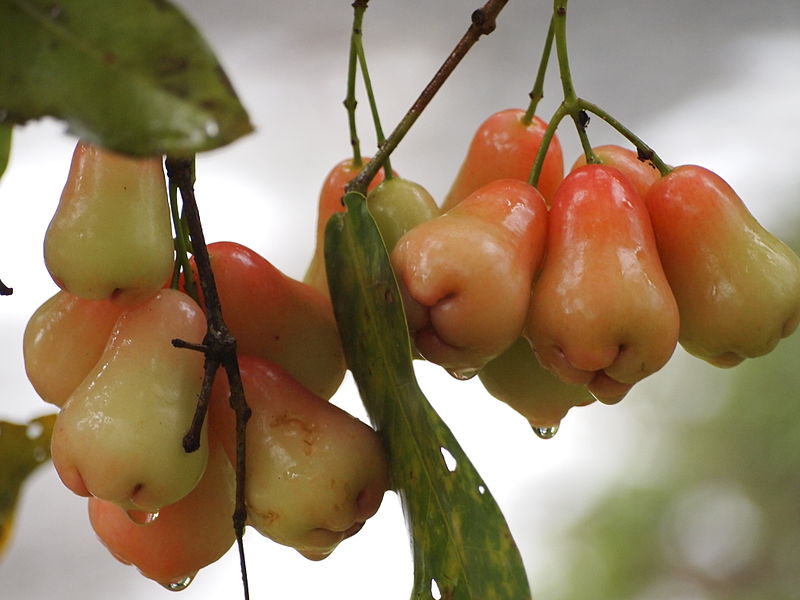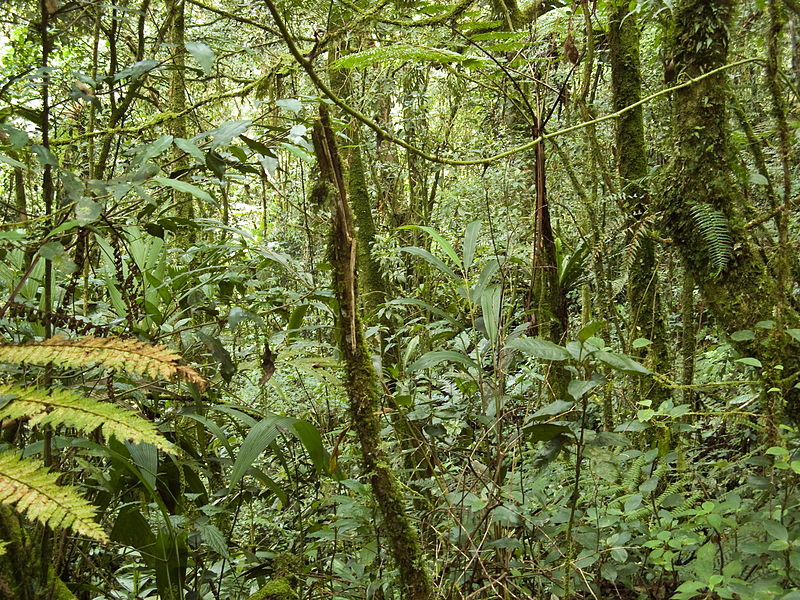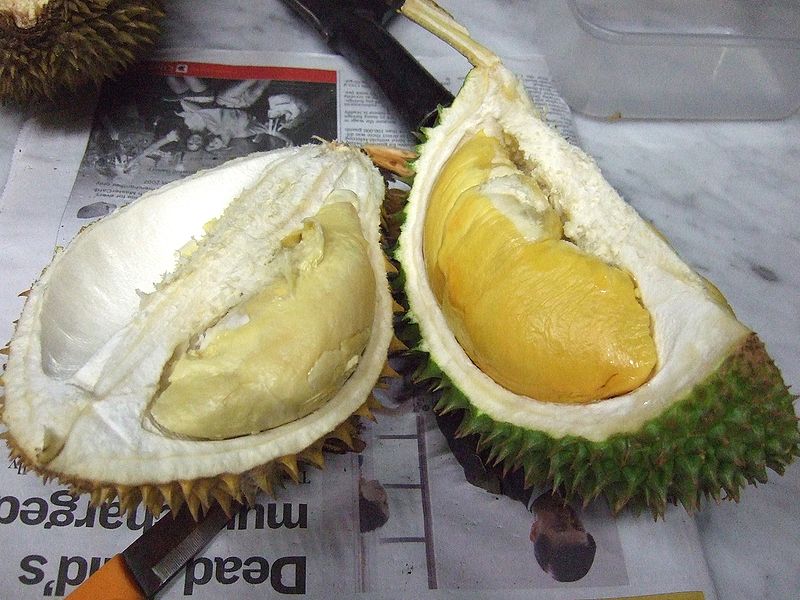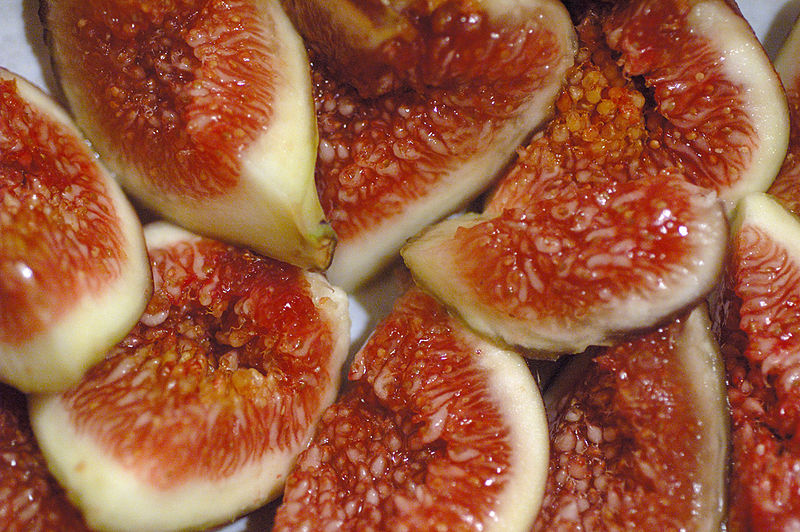Nutrition
Galeopterus variegatus are arboreal animals. They specialize in eating leaves, which explains their habitat. Along with eating leaves, they eat flowers, flower buds, fruits, nectar, and even sap. One of their arboreal adaptations is their teeth (Nasir and Abdullah, 2010). They have teeth that are shaped to help them scrap sap from trees. There is an abundance of plants found in the tropical forests where the Galeopterus variegatus live such as Moringa oleifera . Some of the plants rely on the animals that eat them, like the Galeopterus variegatus, for seed dispersal.
Durio zibethinus or more commonly known as civet fruit is a tree found in Southeast Asia where Galeopterus variegatus live. This tree is an angiosperm that produces large fruits to attract animals because its main seed dispersal mechanism is through animals. Monkeys, orangutans, and bats also eat this fruit along with the Galeopterus variegatus (Blue Planet Biomes).
 Figure
1. Two opened Durio zibethinus fruits.
Figure
1. Two opened Durio zibethinus fruits.
Another common fruit-bearing tree found the tropical forests is jambu. Jambu fruit is typically red or white and is has a similar shape to a pear. Galeopterus variegatus compete with the same organisms that feed off of the civet fruit for jambu fruit. However, jambu fruit only blooms in July and September (Blue Planet Biomes).
Figure 2. Bundles of jambu fruit hanging from a tree.
One of most popular fruits that the Galeopterus variegatus consume is figs. There is an abundant supply of figs in the forests because they bear fruit multiple times throughout the year.
Now that we know what they eat, let's learn how Galeopterus variegatus reproduce!


